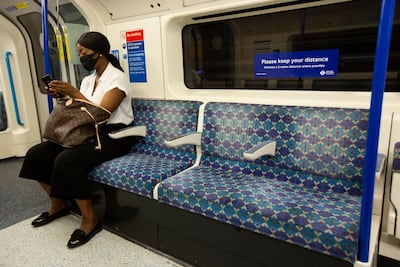A new chart has revealed how travel in Britain has been radically altered by the coronavirus pandemic as nervous commuters shun public transport in favour of working from home.
Government figures show stay-at-home orders and fears over contagion led to a significant drop in usage of bus, train and tube services early last year.
The data, which compares current usage to pre-pandemic levels, was released by the Department for Transport in an updated series.
It illustrates how confidence in travel returned during the summer months, only for it to dissipate after cases in the UK rose and the country was plunged into another lockdown.
The number of car journeys has remained relatively robust, with usage marginally below pre-pandemic levels after a large dip in March.
Comparatively, train and tube services have been hardest hit by the pandemic. Passenger journeys dropped 10 per cent below normal in March and have risen marginally since then. Bus travel has not been quite as badly affected but journeys have roughly halved.

The pandemic has resulted in a post-pandemic cycling boom as people swapped their train season ticket for two wheels. However, the near trebling of cyclists on British roads has not lasted and is now at pre-Covid levels.
Britons appear to be mostly adhering to the latest lockdown with six in 10 adults saying they are staying at home and only leaving for work, exercise, essential shopping or medical needs.
About 57 per cent of adults said they had only left home for these basic needs – less than during the first national lockdown, when 81 per cent said they had obeyed the stay-at-home measures, figures from Office for National Statistics (ONS) show.
But it represents a “significant increase” compared with mid November, when 43 per cent said they had only left home for work, exercise, essential shopping or medical needs.
The restrictions over winter included a four-week lockdown in November for England, a three-week firebreak in Wales from October 23 and protection levels in place in Scotland.
From early January, all three UK nations have been in lockdown.
The ONS analysed responses from 4,624 adults between January 27 and 31, and compared these with the results of previous surveys to see how behaviour has changed.
Scores for life satisfaction, feeling that things done in life are worthwhile, and happiness remained at some of the lowest levels recorded since March 2020.
And anxiety levels are at their highest since April. Only 17 per cent of adults feel life will return to normal within six months, while 29 per cent feel this will take more than a year.









